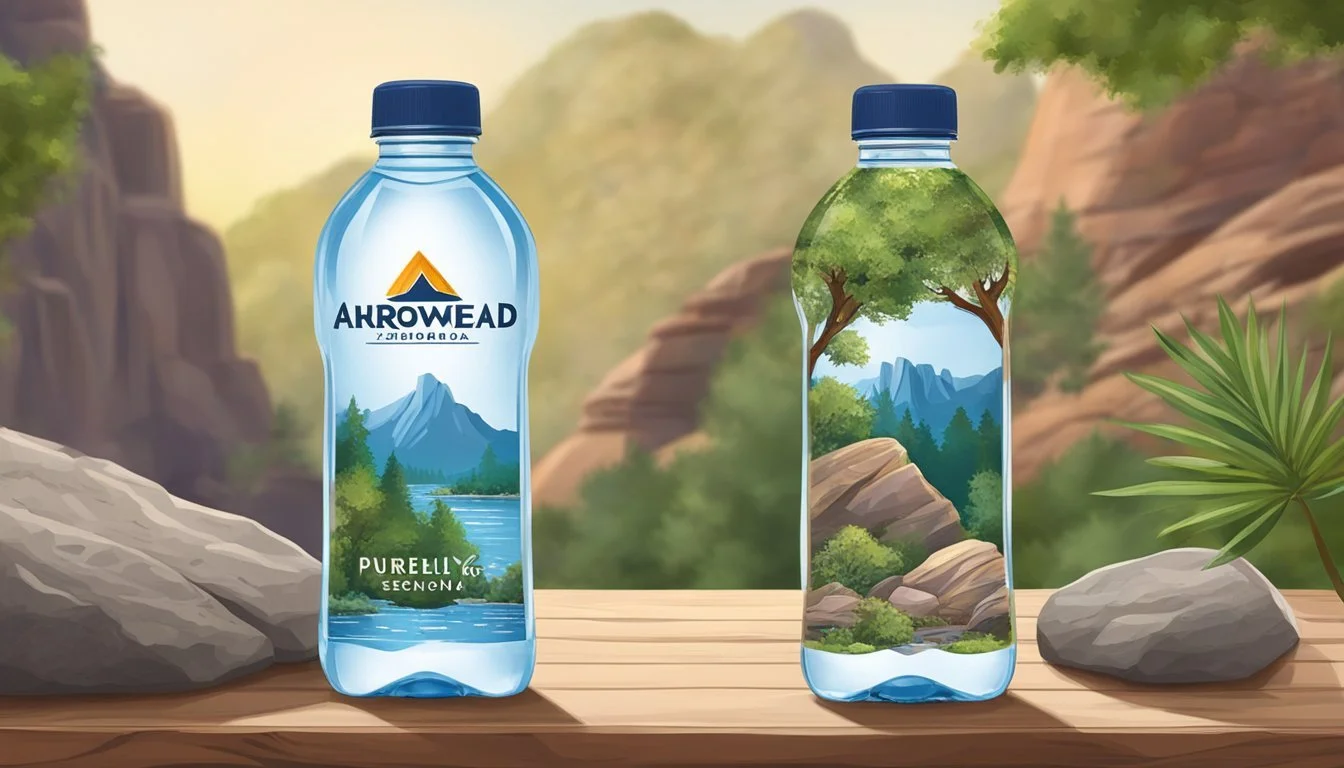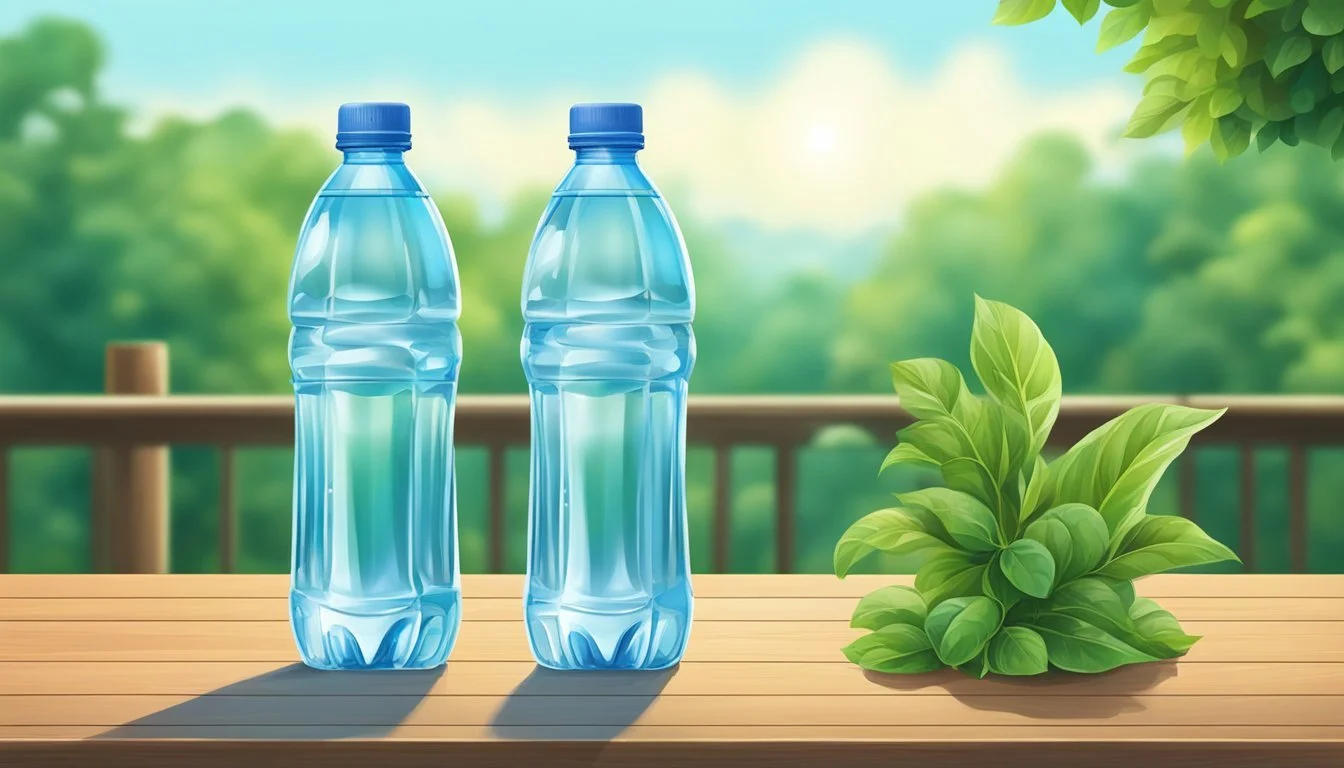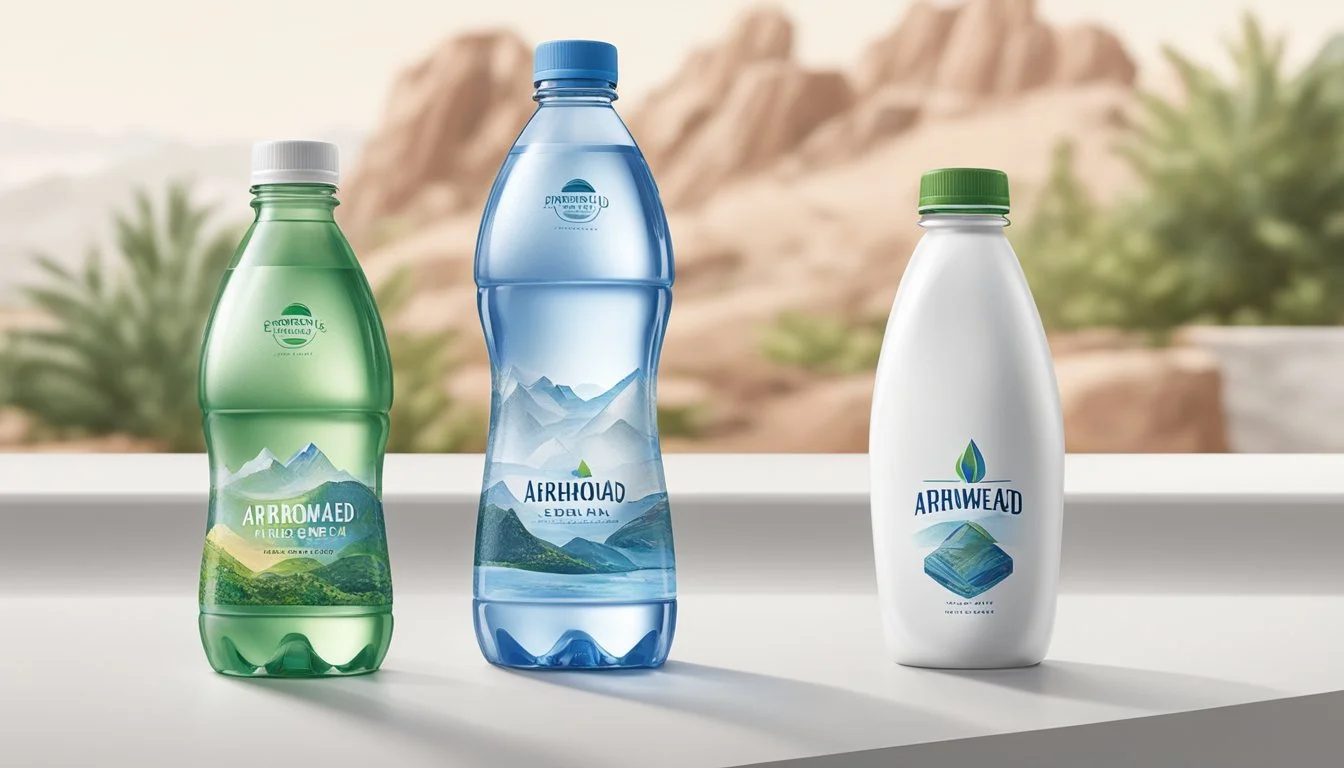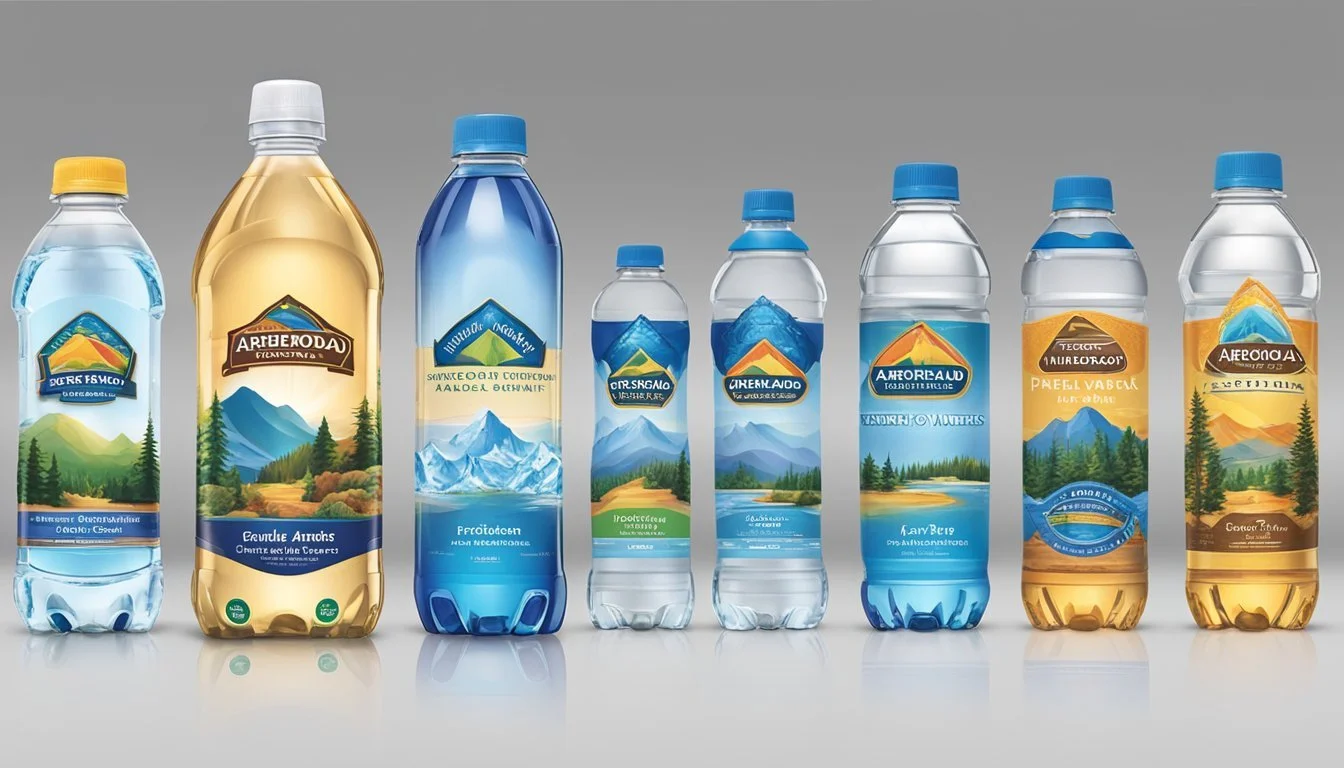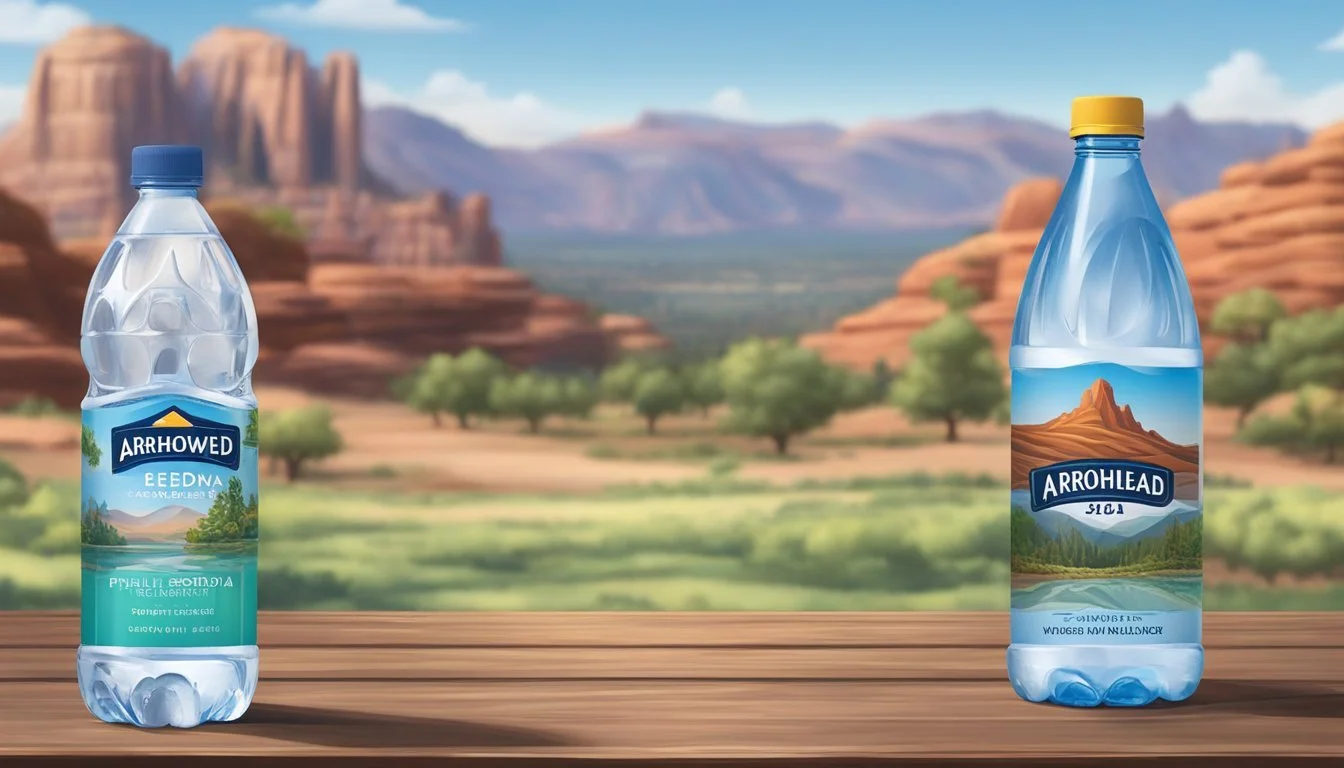Arrowhead vs. Purely Sedona
Comparing the Best Bottled Water Brands
Choosing the right bottled water can feel overwhelming with so many brands on the market. When it comes to Arrowhead and Purely Sedona, people often wonder which one stands out. By examining the quality, taste, and source of Arrowhead and Purely Sedona, we can determine which bottled water offers the best value.
Arrowhead, known for its extensive history and widespread availability, sources its water from carefully selected springs in the United States. On the other hand, Purely Sedona prides itself on providing water from the unique geological features of Sedona, Arizona. This brings distinct mineral compositions and flavor profiles to each brand.
For those who prioritize taste and purity, Purely Sedona typically boasts a cleaner, crisper flavor due to its specific sourcing and filtration standards. Arrowhead offers a reliable and consistent product, which often appeals to those seeking a cost-effective and accessible option.
Understanding Bottled Water
Bottled water comes in various forms, each with distinct characteristics, sources, and filtration processes. These differences significantly impact water quality and taste, which are key considerations for consumers.
Types of Bottled Water
Bottled water can be categorized into several types, each defined by its source and treatment method:
Spring Water: Originates from underground sources and flows naturally to the surface.
Mineral Water: Contains minerals and trace elements from its source, cannot be altered.
Purified Water: Undergoes processes like reverse osmosis or distillation to remove impurities.
Sparkling Water: Naturally carbonated or artificially carbonated through the addition of CO2.
These distinctions affect the flavor, mineral content, and potential health benefits of the water.
Sources and Origin of Water
The source from which bottled water is derived plays a critical role in its quality:
Natural Spring Water: Comes from natural springs, often situated in mountainous regions, providing a clean and refreshing taste.
Groundwater: Extracted from underground aquifers, filtered naturally through rock and soil layers.
Mountain Spring Water: Sourced from high-altitude springs, known for being exceptionally pure and rich in minerals.
Other Sources: Includes municipal sources, often heavily treated to ensure safety and consistency.
Understanding the origin helps consumers make informed choices based on their preferences for taste and mineral content.
Water Quality and Filtration
Quality and filtration processes are crucial for ensuring bottled water safety and taste:
Reverse Osmosis: Removes contaminants by forcing water through a semipermeable membrane.
Ultraviolet Treatment: Uses UV light to sterilize water by eliminating bacteria and viruses.
Ozone Sterilization: Adds ozone gas to disinfect water without leaving residual chemicals.
Other Filtration Methods: Such as carbon filtering, which removes chlorine and organic compounds affecting taste and odor.
These methods impact the final quality of bottled water, ensuring that it meets safety standards and delivers a pleasant drinking experience.
By considering the types, sources, and filtration methods, consumers can choose bottled water that best suits their needs and preferences.
Health and Hydration
Arrowhead and Purely Sedona bottled waters differ significantly in water quality, which may impact health benefits and hydration effectiveness. This analysis focuses on hydration importance, pH levels, and safety concerning contaminants.
Importance of Hydration
Hydration is critical for maintaining overall health and bodily functions. The body requires a constant supply of water to regulate temperature, transport nutrients, and eliminate waste.
Both Arrowhead and Purely Sedona offer excellent hydration, though they differ in mineral content. Minerals like calcium and magnesium, found in Arrowhead, contribute to electrolyte balance, necessary for muscle function and nerve transmission.
Purely Sedona, while still hydrating, may have a different mineral composition, impacting electrolyte replacement differently.
Proper hydration supports cognitive function, skin health, and energy levels. Choosing a water that aligns with your nutritional needs can enhance these benefits.
pH Levels and Balance
The pH level of water is a measure of its acidity or alkalinity, which can affect taste and potential health benefits. Arrowhead water typically has a more alkaline pH due to its natural spring source.
An alkaline pH can help neutralize acid in the bloodstream, potentially offering benefits for those with acid reflux or general digestive issues.
In contrast, Purely Sedona usually has a pH closer to neutral. While still beneficial, neutral pH water does not provide the same potential alkaline advantages.
Monitoring pH balance can be important for individuals with specific dietary or health needs, influencing their choice between these two brands.
Contaminants and Safety
Safety and quality are paramount when choosing bottled water. Arrowhead being natural spring water, and Purely Sedona, must both meet stringent safety standards.
Contaminants such as lead, heavy metals, arsenic, and PFAS chemicals pose significant health risks. Both brands undergo rigorous testing to ensure they are free from these harmful substances.
Arrowhead's spring water source offers natural filtration through earth layers, reducing contamination risks. Purely Sedona, often featuring advanced purification processes, also aims to eliminate contaminants efficiently.
Ensuring safe drinking water protects against a range of health issues, from gastrointestinal distress to long-term chronic conditions caused by contaminants like mercury.
Understanding these factors helps in making an informed choice for better health and hydration.
Comparative Analysis of Arrowhead and Purely Sedona
Both Arrowhead and Purely Sedona offer unique features in terms of taste, mineral content, brand reputation, and packaging. This section guides the reader through a detailed side-by-side comparison, highlighting key aspects to consider when choosing between these two bottled water brands.
Taste Profile and Mineral Content
Arrowhead is natural spring water that typically has a slightly alkaline pH, due to its natural mineral content, including calcium and magnesium. This gives it a distinct taste that some find refreshing and slightly earthy.
Purely Sedona also offers a unique taste profile but is known for its exceptional purity and slightly sweet undertone, often preferred by those looking for a clean, crisp flavor. Its mineral content is carefully balanced to achieve a neutral pH, making it suitable for a broader audience.
Brand Reputation and Consumer Trust
Arrowhead is a well-known brand with a long history in the bottled water market. It is often recognized for its consistent quality and wide availability.
Purely Sedona may not be as widely recognized as Arrowhead, but it has garnered a loyal following for its commitment to purity and eco-friendly practices. This brand places a strong emphasis on sourcing and quality control, earning consumer trust despite a smaller market presence.
Packaging and Material
Arrowhead typically uses BPA-free plastic bottles, ensuring safety but raising concerns about plastic waste among environmentally-conscious consumers. The brand has made efforts to reduce its carbon footprint, but plastic remains a primary packaging material.
Purely Sedona stands out with its use of glass bottles and boxed water options, appealing to those who seek sustainable packaging. These materials reduce environmental impact and can be reused or recycled more easily than plastic, making them an attractive choice for eco-friendly consumers.
In conclusion, the choice between Arrowhead and Purely Sedona depends on individual preferences regarding taste, brand reputation, and packaging preferences. Arrowhead offers a traditional and widely trusted option, while Purely Sedona provides purity and sustainability for the discerning consumer.
Environmental and Sustainability Considerations
When evaluating Arrowhead and Purely Sedona bottled water, there are critical environmental and sustainability concerns to consider. These include the impact of plastic bottles on the environment, the companies' sustainability practices, and their efforts toward eco-friendly certifications.
Impact of Bottled Water on the Environment
The production and disposal of plastic bottles have significant environmental implications. Manufacturing these bottles consumes vast amounts of fossil fuels, contributing to a high carbon footprint. For instance, it is estimated that the US alone uses over 17 million barrels of oil each year to produce bottled water.
Additionally, plastic waste is a serious problem. Many bottles end up in landfills or oceans, posing threats to wildlife and ecosystems. Recycling rates for plastic bottles are also lower than desirable, which exacerbates the environmental impact. Therefore, the environmental footprint of bottled water includes resource consumption, waste generation, and pollution.
Sustainability Practices and Certifications
Arrowhead and Purely Sedona have varying approaches to sustainability. Arrowhead has taken steps to improve its environmental footprint by focusing on using recycled materials for their bottles and increasing the recyclability of their products. The brand also emphasizes environmental sustainability, partnering with various organizations to protect natural resources.
Purely Sedona, on the other hand, prioritizes sourcing water sustainably and reducing their overall environmental impact. They invest in eco-friendly packaging solutions and aim to reduce their carbon footprint through efficient production techniques. The brand also seeks certifications that affirm their commitment to sustainability, such as meeting standards set by environmental bodies.
Both brands have their unique strengths in promoting sustainability, yet the effectiveness of these practices can vary and influences consumer choices significantly.
Accessibility and Convenience
Arrowhead and Purely Sedona bottled waters offer different levels of accessibility and convenience to consumers. Key factors include their availability in retail settings and the variety of consumption options offered by each brand.
Availability in Retail
Arrowhead is widely available across the United States. Consumers can easily find it in grocery stores, convenience stores, and large retail chains. This widespread distribution ensures that Arrowhead can be purchased without extensive effort, making it a convenient option for many.
Purely Sedona, on the other hand, has a more limited distribution network. It is often found in specialty stores and select supermarkets. This can make acquiring Purely Sedona somewhat more challenging for consumers who do not live near these retail outlets.
Comparison of Consumption Options
Arrowhead provides a variety of plastic bottle sizes, including single-serving bottles, multipacks, and larger gallon containers. This diversity allows consumers to choose the quantity that best meets their needs, whether for personal use, family consumption, or events.
Purely Sedona offers fewer packaging options. It focuses primarily on standard bottles available individually or in smaller packs. While this may appeal to some consumers, it may not offer the same level of flexibility as Arrowhead when it comes to choosing how much water to purchase at one time.
The Role of Brands and Market Variety
In the bottled water market, brand reputation and product variety significantly impact consumer choices. By examining the diversity among water brands and exploring the challenges and opportunities each brand faces, consumers gain insights into what makes bottled water appealing.
Diversity Among Water Brands
Bottled water options are abundant, with each brand bringing unique qualities. Among the prominent names are Fiji, Evian, Smartwater, and Voss. These brands differentiate through source, taste, and packaging.
For instance, Fiji Water is known for its aquifer source, while Smartwater focuses on vapor-distilled purity. Voss boasts mineral-rich waters from Norway. Each brand aims to cater to different consumer preferences, driving a wide range of options in the market.
Brand Challenges and Opportunities
Bottled water brands face intense competition and various challenges. Maintaining quality and sustainability is crucial. Companies like Nestlé Waters and Coca-Cola (with Dasani) must balance mass production with environmental considerations.
Opportunities arise in niche markets. Brands like Core Hydration and Eternal Water target health-conscious consumers with pH-balanced and clean-source options. Innovations in eco-friendly packaging, as seen with Just Water, also present substantial growth opportunities.
Consumer trust is another challenge. Building a loyal customer base involves consistent branding and quality assurance. Positive reviews and robust marketing strategies help water brands differentiate themselves in a competitive marketplace.

